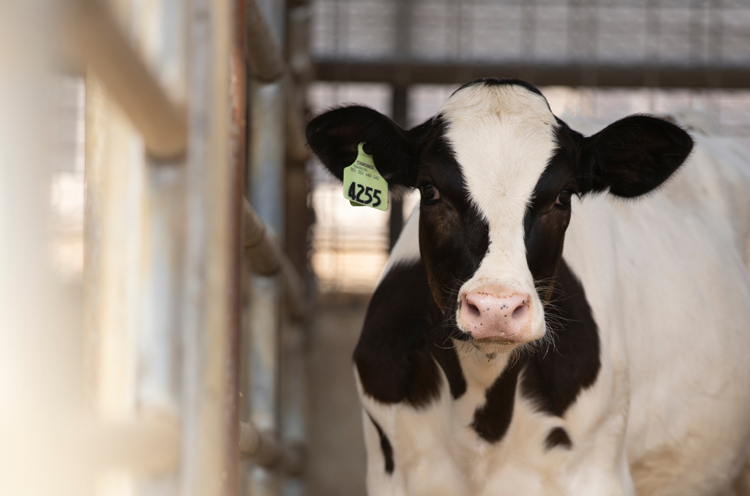
Mannheimia haemolytica is one of the leading causes of respiratory disease in cattle.1 Not only is it common, but it can cause severe pneumonia with a high mortality rate. Animals with an infection can go from seemingly healthy to deceased in a day’s time.
Although this pathogen can strike at any age, it’s a much more serious problem in youngstock.
“Mannheimia produces a toxin that kills white blood cells, which are important for immunity,” said Mark van der List, D.V.M., Boehringer Ingelheim. “White blood cells have enzymes meant to kill bacteria they ingest, but when those cells are killed, the enzymes are released and damage tissue.
“That’s why Mannheimia is so pathogenic,” added Dr. van der List. “Pneumonia caused by a similar pathogen — Pasteurella multocida — is usually not as severe.”
How it spreads
“Mannheimia is a secondary invader,” observed Dr. van der List. “It is a common bacterial flora found in the upper respiratory tract of cattle, and in normal conditions, causes no problems.” However, periods of stress or viral infections such as bovine viral diarrhea virus and infectious bovine rhinotracheitis virus can weaken the animal’s immunity and cause the pathogen to move down to the lungs and cause an infection.
Although you may suspect a respiratory disease outbreak involves M. haemolytica, there’s no way of knowing without laboratory testing. This may involve necropsy or respiratory tract samples taken by your veterinarian.
If an animal has respiratory disease, try to catch a case as early as possible to minimize lung damage. There are many signs that indicate respiratory disease, including loss of appetite, fever, droopy ears, nasal discharge, and coughing.
A calf respiratory scoring chart is a helpful tool for identifying respiratory disease in young animals. Ultrasound has also stepped up the game diagnostically. Early diagnosis leads to prompt treatment and better outcomes.
“One of the common misconceptions is that respiratory disease isn’t as prevalent in the milk feeding period as it is post weaning,” explained Dr. van der List. “With increased usage of diagnostic methods such as ultrasound, we’re finding there’s quite a lot of respiratory infection occurring preweaning.”
A total approach to prevention
“We want good nutrition and colostrum absorption, proper housing management, a good vaccination program, and minimum stress to help prevent infections,” said Dr. van der List. Vaccines should protect against both respiratory virus pathogens and M. haemolytica.
Air quality and movement are important considerations for young calf respiratory health. Outdoor hutches or indoor calf-rearing systems with natural ventilation and a positive-pressure ventilation system in housed calves work best for optimum airflow.
With the highly contagious nature of some respiratory pathogens, avoiding nose-to-nose contact between animals is also an important preventive measure. “If you’re using pair housing, make sure you have separation from one group to the next so the infectious pathogen can’t work its way down the line,” noted Dr. van der List.
Treatment
If you have a respiratory disease problem in your herd, involve your veterinarian early to run diagnostics, identify what’s causing the problem, and prescribe an effective, fast-acting antibiotic labeled to treat the pathogen identified. Gamithromycin is an antibiotic that is rapidly absorbed and distributed to lung tissue and is labeled for the treatment and control of M. haemolytica and other respiratory pathogens.2
“If the animal isn’t responding to treatment, your veterinarian can take samples and run antibiotic sensitivity testing to ensure the bacteria is sensitive to the antibiotic,” Dr. van der List concluded.
References:
1 Griffin D, Chengappa M, Kuszak J, McVey DS. Bacterial pathogens of the bovine respiratory disease complex. Vet Clin North Am Food Anim Pract 2010;26(2):381–394.
2 Sifferman RL, Wolff WA, Holste JE, et al. Field efficacy evaluation of gamithromycin for treatment of bovine respiratory disease in cattle at feedlots. Intern J Appl Res Vet Med 2011;9(2):166–175.
©2024 Boehringer Ingelheim Animal Health USA Inc., Duluth, GA. All Rights Reserved. US-BOV-0036-2024
